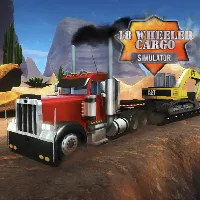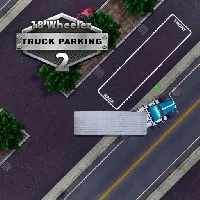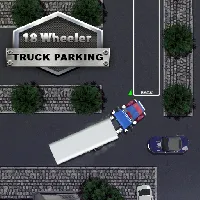HILL CLIMB RACING
SIMILAR GAMES
Description
Hill Climb Racing - GamePluto
About Hill Climb Racing - GamePluto
Welcome to the definitive guide to Hill Climb Racing, a game that has captured the hearts of millions with its addictive physics-based gameplay and charming simplicity. At GamePluto, we delve deep into what makes this title an enduring favorite, offering insights that will elevate your understanding and mastery of this thrilling off-road adventure. Prepare to explore every facet of Hill Climb Racing, from its core mechanics to advanced strategies for conquering the most challenging inclines.
This is more than just a racing game; it’s a test of precision, timing, and vehicle customization. Players are tasked with navigating a multitude of diverse terrains, each presenting unique obstacles and opportunities for spectacular jumps and daring maneuvers. The intuitive controls, while simple to grasp, conceal a depth of skill required for true championship performance. We’re here to unpack that complexity and present it in a way that empowers every player, whether you're a seasoned veteran or just beginning your climb.
Our comprehensive coverage ensures that you’ll find everything you need to enhance your Hill Climb Racing experience. From understanding the nuances of different vehicles to optimizing your upgrades, we aim to be your ultimate resource. Join us as we embark on this exhilarating journey up virtual mountains, focusing on the elements that make Hill Climb Racing an unforgettable gaming experience.
The Core Gameplay Mechanics of Hill Climb Racing
Hill Climb Racing is built upon a foundation of accessible yet surprisingly deep physics. The primary objective is to drive your chosen vehicle as far as possible up a series of challenging hills, collecting coins and fuel along the way while avoiding crashes and flips. The controls are elegantly simple: a left pedal to accelerate and a right pedal to brake. However, the real mastery lies in how you utilize these controls in conjunction with your vehicle’s momentum and the unpredictable terrain.
The game's physics engine is a key differentiator. Every bump, every incline, and every jump is simulated with a degree of realism that makes mastering the controls a rewarding challenge. Landing a tricky jump requires precise application of both acceleration and braking to control the vehicle's pitch. Over-acceleration can lead to dangerous flips, while excessive braking can halt your progress or cause a stall. Finding that delicate balance is the essence of successful play in Hill Climb Racing.
Fuel management is another critical component. As you race, your fuel gauge steadily depletes. You must strategically collect fuel cans scattered across the levels to keep your engine running. Running out of fuel before reaching a checkpoint or the end of the level means starting over. This adds a layer of urgency and forces players to take calculated risks, often pushing their vehicles to their limits to snatch those vital fuel reserves.
Coin collection is not merely a secondary objective; it’s integral to progression. Coins are awarded for distance traveled, stunts performed, and for reaching checkpoints. These coins are the currency you’ll use to purchase new vehicles and, more importantly, to upgrade the ones you already own. A well-upgraded vehicle can make a significant difference in your ability to tackle increasingly difficult stages.
Unlocking and Mastering the Diverse Vehicle Fleet
One of the most exciting aspects of Hill Climb Racing is the sheer variety of vehicles available. Each vehicle boasts unique characteristics, including speed, acceleration, handling, fuel capacity, and durability. Understanding these differences is paramount to selecting the right vehicle for specific tracks and challenges. From the sturdy and reliable Monster Truck to the agile and speedy Race Car, there’s a vehicle to suit every playstyle and situation.
- The Classic Hill Climber: The starting vehicle, it’s a good all-rounder for learning the ropes, but quickly becomes underpowered for later stages.
- The Dune Buggy: Lighter and faster than the Hill Climber, it excels at higher speeds and performing jumps, but is less durable.
- The Truck: Offers increased durability and a larger fuel tank, making it suitable for longer runs, though it is slower and less agile.
- The Motorcycle: Extremely fast and agile, perfect for navigating tight spots and performing wheelies for coin bonuses, but highly prone to flipping.
- The SUV: A balanced vehicle combining decent speed with good durability, making it a versatile choice for many terrains.
- The Tank: Slow and heavy, but incredibly durable with massive fuel capacity. Excellent for crushing obstacles and surviving rough landings, but requires patience.
- The Snow Mobile: Designed for icy terrains, offering good speed and floatation, but can be slippery.
- The Formula One Car: The pinnacle of speed and acceleration, designed for flat, fast tracks. Requires extreme precision to control.
- The Sports Car: A faster, more agile version of the SUV, excellent for speed-focused runs.
- The Hopper: Known for its incredible jumping ability and agility, it can bounce its way over obstacles.
- The Cop Car: Features a siren that can potentially attract bonuses, with decent all-around performance.
- The Royal Enforcer: A heavy-duty vehicle with excellent durability, ideal for overcoming tough obstacles.
- The Tractor: Slow but incredibly stable and durable, it's a reliable choice for challenging inclines where stability is key.
- The Alien UFO: Offers unique flight capabilities and a distinctive playstyle, capable of hovering and limited flight.
- The Fire Truck: Large and powerful, with good durability and a unique water cannon feature.
- The Christmas Tree Van: A festive vehicle with good all-around stats, often featuring special holiday-themed bonuses.
- The Super Woody: A sleek, fast vehicle with excellent handling, perfect for achieving high speeds and long distances.
- The Moonlander: Designed for low-gravity environments, allowing for extended air time and unique maneuvering.
- The Tractor 2: An upgraded version of the Tractor, offering improved performance and stability.
- The Truck 2: A more powerful and durable iteration of the original Truck.
- The Dune Dasher: A specialized off-road buggy built for speed and agility on rough terrain.
- The Electric Car: A modern vehicle with rapid acceleration and impressive top speed, often with a unique energy-based mechanic.
- The Tractor 3: The most advanced version of the Tractor, offering unparalleled stability and power.
- The Monster Truck: The ultimate off-road vehicle, boasting massive tires, incredible durability, and powerful acceleration for conquering the toughest inclines and crushing obstacles.
Each vehicle requires a different approach. For instance, the Monster Truck thrives on brute force and stability, allowing you to power through obstacles and endure rough landings. Conversely, the Motorcycle demands extreme precision to maintain balance and exploit its high speed for maximum coin collection through stunts. Experimentation is key; spend time with each vehicle to understand its unique strengths and weaknesses.
Strategic Upgrades to Maximize Performance
Upgrading your chosen vehicle is not an option; it's a necessity for success in Hill Climb Racing. The coins you earn are best invested in enhancing your vehicle's core attributes. There are typically four main upgrade categories for most vehicles, each offering distinct benefits:
- Engine: This upgrade directly impacts your vehicle's acceleration and top speed. A better engine allows you to climb steeper hills faster and reach higher speeds for longer distances, crucial for covering more ground and collecting more coins.
- Suspension: Upgrading the suspension improves your vehicle’s handling and stability, especially over rough terrain. A superior suspension absorbs bumps more effectively, reducing jarring impacts and making it easier to control your vehicle’s pitch, thus preventing flips.
- Tires: New tires provide better grip on various surfaces. Enhanced tires ensure that your vehicle doesn't spin its wheels unnecessarily, allowing for more efficient power transfer to the ground and improved traction on inclines and during acceleration.
- 4WD (Four-Wheel Drive): Activating or upgrading the 4WD system distributes power to all wheels, significantly improving traction and acceleration. This is especially beneficial for steep inclines and for getting started from a standstill on difficult surfaces.
Prioritizing your upgrades depends on the vehicle and the terrain you're facing. For a vehicle like the Monster Truck, emphasizing its engine and 4WD might be wise to maximize its brute power. For a lighter, faster vehicle like the Race Car, focusing on suspension and tires could be more beneficial to maintain control at high speeds. We recommend consistently investing in your primary vehicle until its stats are significantly enhanced. Don't spread your coins too thinly; focus on making one vehicle a powerhouse.
Conquering Diverse and Challenging Environments
Hill Climb Racing features an impressive array of distinct environments, each designed to test your driving skills in unique ways. From the rolling green hills of the countryside to the treacherous icy landscapes and the desolate lunar surface, every stage demands a different approach and adaptation of your driving strategy.
- Country: The classic starting environment, offering moderate inclines and gentle curves.
- Desert: Features softer sand that can reduce traction and more pronounced dunes.
- Forest: Denser with more obstacles, roots, and uneven terrain.
- Night: A variation of existing maps with reduced visibility, requiring precise timing and control.
- Mount Everest: Extremely steep inclines and icy surfaces demanding excellent grip and control.
- Halloween: Themed levels with spooky obstacles and unique track designs.
- Christmas: Festive environments with holiday-themed challenges and visual elements.
- Mars: Offers low gravity, enabling longer jumps and extended air time, but also making control more challenging.
- The Moon: Similar to Mars, with even lower gravity, requiring very careful control to avoid prolonged, uncontrollable flights.
- The City: Urban environments with ramps, traffic, and building obstacles.
- The Volcano: Features extreme heat, lava, and unstable ground, demanding quick reflexes and durable vehicles.
- The Arctic: Icy terrains with slippery surfaces, requiring careful navigation and good tire grip.
- The Factory: Industrial settings with machinery, conveyor belts, and hazardous materials.
- The Badlands: Arid, rocky terrain with treacherous cliffs and sharp drops.
- The Ruins: Ancient, crumbling structures offering uneven paths and hidden dangers.
- The Highway: Long, straight stretches interspersed with challenging overpasses and underpasses.
- The Sky: Floating islands and aerial challenges requiring precise navigation through the air.
- The Submarine Base: Underwater environments with unique physics and obstacles.
- The Space Station: Zero-gravity environments offering unique maneuvering challenges.
- The Stadium: Designed for stunts and showcasing vehicle performance with large ramps and loops.
- The Jurassic Park: Features dinosaur-themed obstacles and prehistoric landscapes.
- The Desert 2: An enhanced desert environment with more complex dune formations.
- The Forest 2: A more challenging forest map with denser foliage and trickier pathways.
- The Arctic 2: A more challenging icy environment with steeper slopes and treacherous conditions.
- The Highway 2: An advanced highway map with more complex traffic patterns and challenging ramps.
In environments like Mount Everest or the Arctic, tire and suspension upgrades are crucial to maintain traction on slippery surfaces. For Mars or the Moon, where low gravity is a factor, understanding how to manage airtime and control your vehicle's orientation is paramount. Always consider the environment when selecting your vehicle and planning your upgrade strategy. Adapting your driving style to the unique physics and challenges of each map is the hallmark of a truly skilled Hill Climb Racing player.
Advanced Techniques for Peak Performance
Beyond the basic controls and upgrades, a deeper layer of strategy can significantly boost your scores and progress in Hill Climb Racing. Mastering these advanced techniques will separate you from the casual player and help you achieve those coveted long-distance runs.
- Stunt Bonuses: Performing flips (forward and backward), wheelies, and jumps at high speeds rewards you with significant coin multipliers. Learn to initiate and control these stunts. A well-timed flip after a ramp can yield a massive coin bonus, but requires careful braking upon landing.
- Coin Management: Always prioritize collecting coins, but do so smartly. Sometimes, a slight detour for a cluster of coins might be worth the risk if you can maintain momentum. However, avoid reckless maneuvers that could lead to a crash or flip, as the potential coin loss often outweighs the gain.
- Fuel Efficiency: While collecting fuel is essential, try to drive in a manner that conserves fuel. Smooth acceleration and avoiding unnecessary braking can help extend your run. Sometimes, a slightly slower but steadier approach is more beneficial than flooring the accelerator and burning through fuel rapidly.
- Momentum Control: Understanding how to use momentum is vital. Hitting a hill with speed is essential for climbing, but you must also be prepared to use your brakes to control the vehicle's pitch. Learning to "feather" the accelerator and brake allows for minute adjustments that can prevent crashes.
- Edge of the Map Exploitation: In some instances, carefully driving along the very edge of the map or clinging to inclines can provide a stable path and prevent your vehicle from tipping over, especially when dealing with extremely steep or uneven terrain.
- Strategic Stopping: There are moments when stopping altogether and assessing the terrain ahead is the wisest course of action. This is particularly true when facing a very steep incline or a series of unpredictable obstacles. A brief pause can allow you to plan your approach and avoid a costly mistake.
- Vehicle Tuning for Specific Tracks: As you become more experienced, you'll notice certain vehicles excel on specific types of tracks. For example, the Monster Truck is fantastic for rough, obstacle-filled terrains, while the Formula One Car is designed for speed on smooth, flat surfaces. Learn to match the vehicle to the environment for optimal results.
These advanced techniques, combined with a thorough understanding of vehicle mechanics and upgrades, are the keys to unlocking your true potential in Hill Climb Racing. Continuous practice and experimentation will refine your skills and allow you to conquer even the most daunting challenges the game has to offer.
Conclusion - Your Ultimate Hill Climb Racing Resource at GamePluto
At GamePluto, we are dedicated to providing the most comprehensive and insightful content for Hill Climb Racing. We have explored the fundamental mechanics that make this game so engaging, the vast array of vehicles that offer diverse playstyles, and the crucial upgrade systems that empower you to dominate any terrain. Furthermore, we have touched upon the varied environments and the advanced techniques that separate skilled players from the rest.
We believe that by understanding these core elements, you are well-equipped to embark on your own epic climbing adventures. Whether you're aiming for record distances, collecting all the coins, or simply striving for the perfect run, the strategies and knowledge shared here will serve as your foundation. Continue to experiment, adapt, and most importantly, have fun conquering those hills!
Play Hill Climb Racing for free on GamePluto. Enjoy thousands of the best games with no ads, easy access from anywhere, and fun gameplay using your keyboard or just clicking. Have a blast! 🎮
Common Controls:
Keyboard Controls:
- Arrow Keys: Movement (Up, Down, Left, Right)
- W, A, S, D: Alternative movement keys
- Spacebar: Jump or action key
- Enter: Confirm or interact
- Shift: Run or sprint
- Ctrl: Crouch or special action
- E, Q, F: Interact, pick up items, or perform specific game actions
- 1-9: Select weapons or items
- Tab: Open inventory or menu
- Esc: Pause game or open game settings
Mouse Controls:
- Left Click: Primary action (e.g., shoot, select)
- Right Click: Secondary action (e.g., aim, alternate functions)
- Mouse Movement: Aiming or camera control
- Scroll Wheel: Zoom in/out or cycle through items/weapons
Gamepad/Controller (if supported):
- Analog Sticks: Movement and aiming
- A/B/X/Y or Cross/Circle/Square/Triangle: Action buttons for various functions
- D-Pad: Menu navigation or movement
- Triggers (L1/R1, L2/R2): Shooting, aiming, or special actions
- Start/Select: Open menu or pause game
Touch Controls (for mobile-friendly games):
- Tap: Select or interact
- Swipe: Move or aim
- Pinch/Spread: Zoom in or out
- Long Press: Secondary action
















































